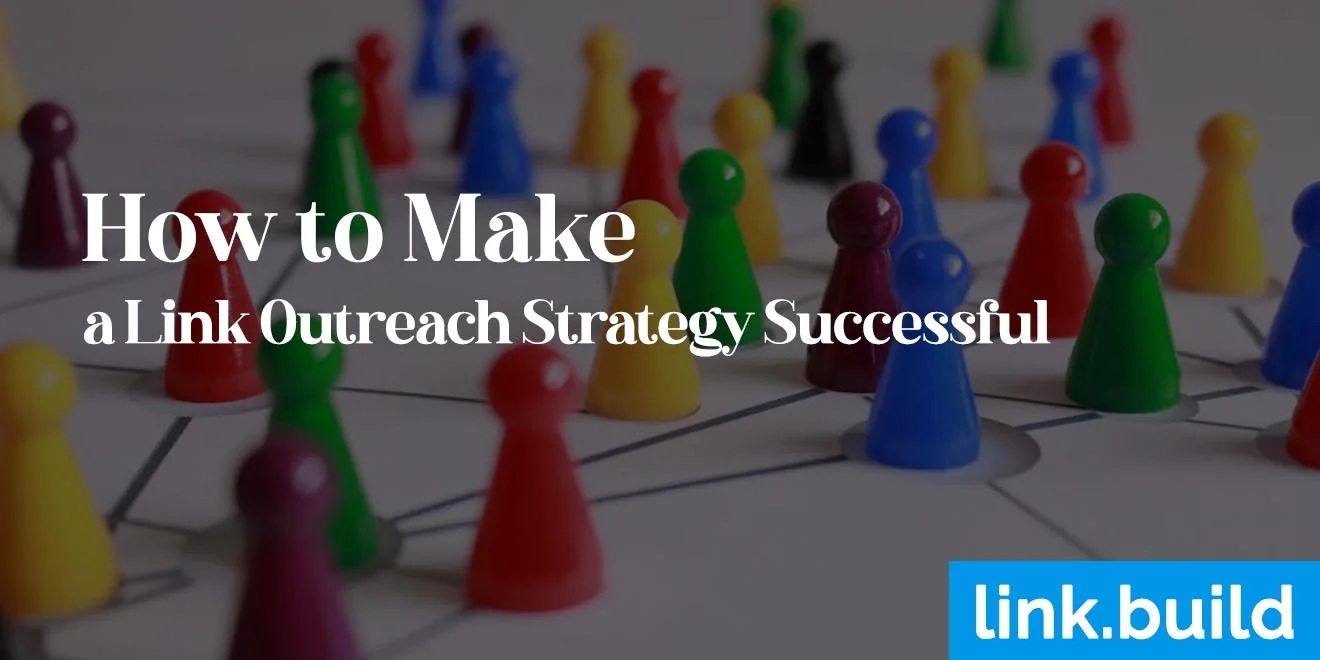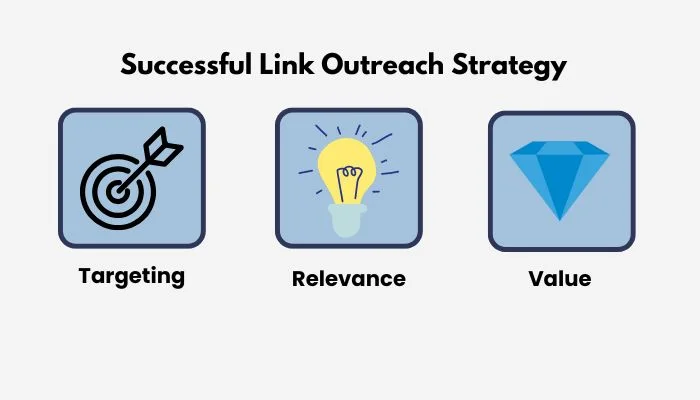How to Make a Link Outreach Strategy Successful in 2025

SEO can't really work without some kind of link building component.
But man, those link building elements can be a real pain.
Link outreach has been one of the most consistent and most popular tactics for securing new links for your brand, and up until recently, we would have recommended it to anyone.
But right now, link outreach isn't quite as easy, accessible, or consistent as it used to be.
Thousands of search engine optimizers (including you, presumably) have been running into issues with making link outreach successful.
So is it time to just give up and move on?
No, not exactly.
The truth is, link outreach is still a highly viable strategy. You just have to be smart about it.
So how can you make your link outreach strategy successful in 2025 and beyond?
The Basics of Link Outreach
Let's start with a brief primer on how link outreach works.
If you're not familiar with this strategy, this should help you grasp the basics. And if you are familiar with this strategy, this should help you identify some of the major problems with it.
Essentially, link outreach means reaching out to publishers that might support your content and link building efforts, in the hopes that they'll secure a link placement on your behalf.
The process typically goes something like this:
- Identify targets. Everything starts with selecting the right targets. If you want a link to be successful, you should be placed on a publisher website that's relevant to your niche, as well as high in authority. Of course, high authority websites also have high standards, so you need to be able to contribute something of value if you want your link to be placed. With so many important factors to consider, it's hard to find targets that meet every requirement, and this is especially the case now.
- Reach out. You can't practice outreach without reaching out! After you've identified a target, you can reach out to an editor, a writer, or another publishing authority who might be able to help you secure a placed link. Typically, this includes making a pitch for a valuable piece of content or making some kind of other offer.
- Follow up. Publishers are busy, so it's unlikely for them to respond right away. This is especially true if this publisher is bombarded with pitches and requests. Accordingly, you may need to follow up several times before you even get a response.
- Negotiate. Standard negotiation strategies can help you build a more favorable position once the dialogue is open. You may be able to recommend changes to the type of content they want or the piece they want. You may be able to secure a more favorable link, or publication on a more favorable part of the website. Or more simply, you may be able to extend the deadline provided to you.
- Create content. The best links tend to be housed in quality content. Accordingly, if you want your link outreach strategy to be successful, you need to be able to create amazing content. It should work for your publisher, their audience, and your brand simultaneously, so this balancing act isn't always easy to pull off.
- Wait and collaborate. Link building takes patience, as publishers may not respond to your inquiries right away and may not publish your work right away. You may also have to comply with multiple edit requests and requirements from publishers.
If everything goes well, your link will be published, and you can repeat the process all over again.
Why Link Outreach Strategies Are Struggling
It's a beautiful workflow.
So why the hell isn't it working?
The short answer: spam.
Everyone and their mother knows that link building is vital for SEO, and that link outreach is one of the best strategies for link building. Run a quick Google search on that and you'll probably find thousands of how to articles that anyone can access for free.
Hey, maybe that's how you found us!
In any case, the internet is swarming with small and large brands alike that are desperate to reach new publishers and have their links published. Even relatively small publishers are consistently overwhelmed with inquiries, including initial pitches, openings to dialogue, full articles, and follow-up messages. Even if a publisher is genuinely open to new content and new links from outside contributors, they may not have enough time, space, or patience to deal with all their incoming queries.
The problem is compounded by the fact that so many people are using stale templates and easily replicable patterns to secure links. We've all seen guides on how to write a compelling pitch for a publisher and we've all seen automation software that can send hundreds of queries at once. Unfortunately, this has made matters even more grueling for editors and publishers.
Before you can even get your foot in the door with a given publisher, you need to be able to stand out from this parade of low-quality messages.
The Solution: How to Make a Link Outreach Strategy Successful in 2025
What does it take to make a link outreach strategy successful in 2025 and beyond?
The solution is higher quality.

- Targeting. First, you need to be much more strategic and focused with respetc to the publishers to whom you reach out. If you reach out to a publisher that doesn't have much strategic value to you, not only will your message be buried among thousands of similar ones, but you'll also deprive yourself of a potentially better fit for your brand. If you want to secure more links through your outreach campaign, you need to reach out to people who are actually willing to work with you. This requires much more due diligence up front.
- Relevance. Relevance is highly important for your link building strategy. In fact, relevance might be even more important than authority. You need to make sure that the content you write is relevant to the links you build, that the content you write is relevant to your publisher, and that your publisher is relevant to your brand and its industry. Part of the solution here is doubling down on initial research, which we've already covered. But you also need to make sure that the pitches you make are extraordinarily relevant to each publisher and their audience.
- Value. In line with this, you need to shift the value equation. Too many people treat link outreach like a glorified begging campaign, spamming requests to as many people as possible in the hopes that someone will give them something. Instead, you need to turn the dynamics around; you need to provide value to publishers before you expect value from them. The easiest way to do this is to write an excellent pitch, as well as an excellent article once that pitch is approved. But you can also provide value in the form of donations, collaborations, and other contributions. The bottom line is to make it worth your publisher’s while to entertain your request.
Keys to an Effective Link Outreach Strategy in 2025
These additional strategies can help you make your link outreach strategy successful in the years to come:
- Use a variety of tools. First, use a variety of tools to find new publishing opportunities. Don't just use Google search, and don't just use your favorite SEO research tool. Broadening the scope of your search allows you to discover new opportunities, many of which will have the niche, relevance, authority, and accessibility qualities you need to get your links published. Similarly, you should be using research tools to better understand these publishers before you reach out.
- Choose the right targets. Not every potential link is worth building. If your mentality so far has been to build any link available to you, get it out of your head. Some links are incredibly expensive compared to the value they lend to your strategy, and others can actually function as detriments. You need to prioritize links that are highly relevant, perhaps even over links that are highly authoritative, and you always need to consider accessibility as a dimension of your efforts.
- Stop using automation. Ceasing the use of automation altogether is a bit far, but you should definitely walk back your reliance on automation if it's a critical part of your link outreach strategy. One of the biggest reasons why publishers and editors are overwhelmed with requests is because so many SEO professionals have been using mass messaging automation software to send out hundreds, or even thousands of messages at a time. Not only does this add to the spam problem, and make your messages less appealing immediately, but it also prevents you from being relevant and strategic in your pitching.
- Stop using templates. Similarly, you need to sever your reliance on templates. There's nothing wrong with using past messages and successful messages from others as inspiration, but you should be constructing each outreach message from scratch, with every interaction. This will help you keep your messaging focused and relevant, and believe us, your publishers are going to appreciate the effort. They're tired of reading 175 variations of the same message every day.
- Connect with human beings. Stale templates and automation are the problem. Human connection is the solution. If you want to create more meaningful connections with publishers, you need to genuinely connect with the people in charge of them. Reaching out to a person, rather than an editorial inbox or a generic contact account, is going to multiply your chances of success many times over.
- Find the right people. However, if you want to be effective, you need to find the right people. General editors are often the best point of contact, but other editors, content curators, and even writers can be valuable contacts. Poke around the website to see if you can find specific people to connect with, and if that fails, look on social media.
- Provide value first. Before you ask for anything, provide value first. Don't make a request until it's clear that you can do something that will benefit this organization. How will your content be valuable for this audience? How will you be able to help this publisher achieve its goals?
- Nurture your relationships. After reaching out to new publishers, follow up with them and nurture your relationship with them. If you've contributed content somewhere before, consider reaching out to them again in the future to keep that relationship alive. Not only will it improve your reputation among publishers, but it will also present you with new opportunities to build links.
- Tap into your existing network. In line with this, you should make an effort to tap into your existing network. If you're hard-pressed to find new publishing opportunities, consider asking around your current publishers and your connections within them. They may have connections they can put you in contact with, or they may have recommendations for other publishers to pursue. This is one reason why it's so important to keep nurturing your existing relationships.
- Craft highly relevant, valuable pitches. Every pitch that leaves your email account needs to be extremely relevant and valuable for the publisher receiving it. Before you can even do this, you need to understand what the publisher is about and who they're trying to reach. Only when you understand the publisher and their audience will you be able to craft the types of pitches that editors want to see.
- Create truly amazing content. This should go without saying, but you need to create truly amazing content when you work with publishers. Chances are, they work with lots of link outreach professionals and content writers, so the bar is relatively high.
- Make sure all your links are valuable. Similarly, you need to ensure your links are valuable. If a person from this audience stumbles across this link, will they be glad it's there? Will they be annoyed? Will they be confused?
- Be patient. Finally, be patient. Link outreach is not nearly as fast or reliable as it used to be, and building relationships takes a lot of time. Even if you're successful in a pitch, it could be months before your link is eventually published. If you exercise patience, you'll stand to achieve better results and feel better along the way.
The basics of link outreach are easy to explain.
But the mechanics of link outreach are hard and getting harder.
Trust us, we've encountered the same obstacles. But we have the experience, resources, and knowledge necessary to help our clients get the links they need to keep climbing up the SERPs.
Contact us for a free consultation today!


.svg)

.jpg)
.jpg)
.jpg)